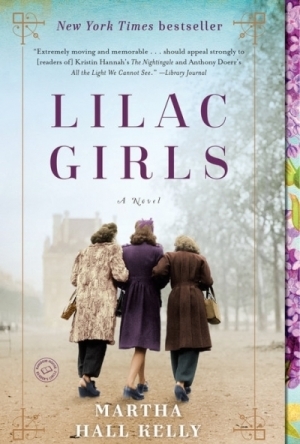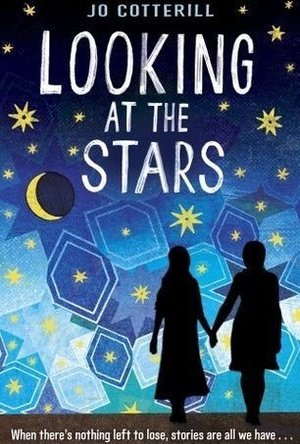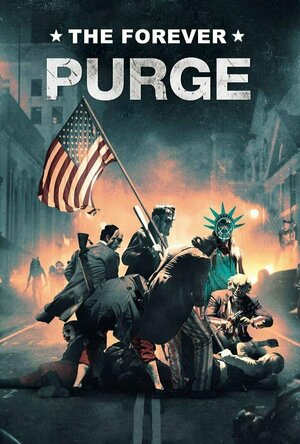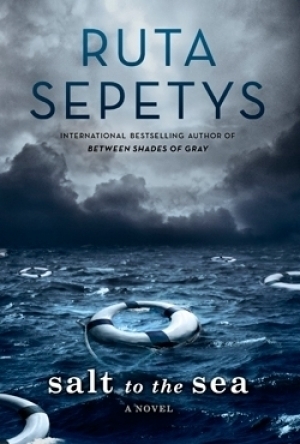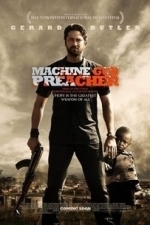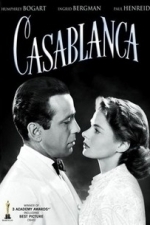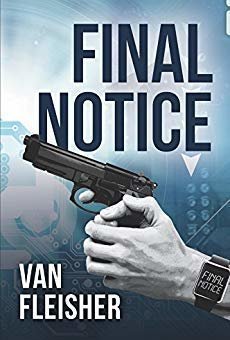Search
The Chocolate Lady (94 KP) rated Lilac Girls in Books
Oct 5, 2020
This novel is very nicely written, with interesting characters. In particular, the protagonist Caroline is beautifully formed, with a life that is fascinating for those who know little about how Americans tried to help those who became unwitting refugees in the US after Hitler invaded their homelands. However, we must remember that Holocaust novels are a dime a dozen. This is why I was hoping that this novel would be different, particularly since the blurb for this book talks about Christine and her helping two survivors of the women's camp Ravensbruck. Unfortunately, the detailed information about the two other women in this story, and their introduction to Ravensbruck was, in my opinion, too much back-story. Although retelling the grim and gory ways that the Nazis treated their prisoners is a necessary evil, I somehow felt that this book included these scenes only to evoke pity for these characters. I don't want to pity characters, I want to have empathy for them, to care about them, and the author let me down with this.
In addition - and I hope this doesn't sound racist or snobbish - as a Jew, I have a hard time with Holocaust novels that seem to outwardly ignore how the Nazis treated the Jews, and only focuses on the other "undesirables." I realize that the Nazis didn't only kill Jews, but they were their primary target, and to avoid that altogether was disingenuous, to say the least. However, I was glad that this book didn't focus on any overtly Christian themes, even though I believe that there is a market for Holocaust stories within the Christian Fiction genre (see my review of the novel The Butterfly and the Violin by Kristy Cambron here http://drchazan.blogspot.com/2014/07/beauty-out-of-ugliness.html for more on my feelings about this).
Furthermore, the only Jewish reference I found in this novel was a passing reference to visiting the Ghetto and a remembrance of eating a Hanukkah delicacy. Unfortunately, the author didn't do her research properly, and the character said she remembered eating a type of doughnut that the Jewish bakers made for the holiday. Those doughnuts - known as "sufganiot" were never part of any Eastern European Hanukkah celebration at that time. In fact, sufganiot that are popular among Jews today, come from the Jews of North Africa and Arab countries. The word, sufganiot, comes from the Arabic and Hebrew words that mean sponge. While Jews in Poland did make something similar, their popularity as a particularly Hanukkah delicacy among Easter European Jews only coincided after Ashkenazi and Mizrahi Jews came together in Israel (i.e., post-1948). All of this is why I cannot give this book a rating of more than two and a half stars out of five, but I'm certain that it will find a much more sympathetic audience among non-Jewish readers.
In addition - and I hope this doesn't sound racist or snobbish - as a Jew, I have a hard time with Holocaust novels that seem to outwardly ignore how the Nazis treated the Jews, and only focuses on the other "undesirables." I realize that the Nazis didn't only kill Jews, but they were their primary target, and to avoid that altogether was disingenuous, to say the least. However, I was glad that this book didn't focus on any overtly Christian themes, even though I believe that there is a market for Holocaust stories within the Christian Fiction genre (see my review of the novel The Butterfly and the Violin by Kristy Cambron here http://drchazan.blogspot.com/2014/07/beauty-out-of-ugliness.html for more on my feelings about this).
Furthermore, the only Jewish reference I found in this novel was a passing reference to visiting the Ghetto and a remembrance of eating a Hanukkah delicacy. Unfortunately, the author didn't do her research properly, and the character said she remembered eating a type of doughnut that the Jewish bakers made for the holiday. Those doughnuts - known as "sufganiot" were never part of any Eastern European Hanukkah celebration at that time. In fact, sufganiot that are popular among Jews today, come from the Jews of North Africa and Arab countries. The word, sufganiot, comes from the Arabic and Hebrew words that mean sponge. While Jews in Poland did make something similar, their popularity as a particularly Hanukkah delicacy among Easter European Jews only coincided after Ashkenazi and Mizrahi Jews came together in Israel (i.e., post-1948). All of this is why I cannot give this book a rating of more than two and a half stars out of five, but I'm certain that it will find a much more sympathetic audience among non-Jewish readers.

Holiday Destination by Nadine Shah
Album Watch
For most of us, 2016 was a tumultuous and ugly year - one steeped in political chaos and an air of...
rock pop
Zuky the BookBum (15 KP) rated My Sister's Bones in Books
Mar 15, 2018
Also read my review here: http://bookbum.weebly.com/book-reviews/my-sisters-bones-by-nuala-ellwood
NOW AVAILABLE IN THE UK!
<b>Trigger warnings are noted in the first paragraph.</b>
<b><i>Were all of us, every day, just a hairbreadth away from evil. If Ive learnt anything from fifteen years of reporting, its that. But I couldnt expect these people to understand.</b></i>
This is a really heavy read as it deals with some really dark and depressing subjects, <b>such as the war and refugees in Syria, domestic & child abuse, rape, death, mental illness, alcoholism and miscarriages.</b> Dont read this if youre having a low period in your life because this is not going to make you feel any better, throughout its a rather distressing and upsetting story.
Each character in this novel was well developed, no matter how small a part they played in the plot. Ellwood has done a fantastic job with her research into PTSD as Kates fears and anxieties seem so real to the reader. Though Ive never experienced anything even close to PTSD, I can really imagine how terrifying and disturbing it would be, from reading this book. Its definitely the best and most harrowing description of the condition Ive ever read in a fiction novel.
This was a really well presented novel and Im amazed that its a debut! It was excellently written and thought out. My only issue being that sometimes, the timings in this book felt a little off. When Kate and Paul were together, one minute they'd be serving dinner and the next, after a small 5 lined conversation, it would be midnight and time for Paul to leave and Kate to get into bed. It seemed like large chunks of the day would just disappear.
Maybe I shouldnt have read some other peoples reviews on this beforehand, but because I was expecting all these super duper amazing twists, I kind of didnt feel that they were super duper amazing. I also found some of them to be a little far fetched and silly, rather than surprising.
I can definitely see why this has gained so many 5 star ratings, but its all down to personal preference at the end of the day, and this one was just a little too dark for my liking. That's not to say I didn't like this...I enjoyed this a lot, hence the 4 stars. I found myself not wanting to put it down, even when my eyes were telling me it was definitely time for sleep. It was certainly a thrilling and page turning read, but I dont know if I could recommend this to anyone because of all the dark subject matters. It seems like the sort of book some people are going to love for its dark realism and others are going to hate that and find it too distressing to read.
Thanks to Netgalley and Penguin Books UK for giving me the opportunity to read this in exchange for an honest review.
NOW AVAILABLE IN THE UK!
<b>Trigger warnings are noted in the first paragraph.</b>
<b><i>Were all of us, every day, just a hairbreadth away from evil. If Ive learnt anything from fifteen years of reporting, its that. But I couldnt expect these people to understand.</b></i>
This is a really heavy read as it deals with some really dark and depressing subjects, <b>such as the war and refugees in Syria, domestic & child abuse, rape, death, mental illness, alcoholism and miscarriages.</b> Dont read this if youre having a low period in your life because this is not going to make you feel any better, throughout its a rather distressing and upsetting story.
Each character in this novel was well developed, no matter how small a part they played in the plot. Ellwood has done a fantastic job with her research into PTSD as Kates fears and anxieties seem so real to the reader. Though Ive never experienced anything even close to PTSD, I can really imagine how terrifying and disturbing it would be, from reading this book. Its definitely the best and most harrowing description of the condition Ive ever read in a fiction novel.
This was a really well presented novel and Im amazed that its a debut! It was excellently written and thought out. My only issue being that sometimes, the timings in this book felt a little off. When Kate and Paul were together, one minute they'd be serving dinner and the next, after a small 5 lined conversation, it would be midnight and time for Paul to leave and Kate to get into bed. It seemed like large chunks of the day would just disappear.
Maybe I shouldnt have read some other peoples reviews on this beforehand, but because I was expecting all these super duper amazing twists, I kind of didnt feel that they were super duper amazing. I also found some of them to be a little far fetched and silly, rather than surprising.
I can definitely see why this has gained so many 5 star ratings, but its all down to personal preference at the end of the day, and this one was just a little too dark for my liking. That's not to say I didn't like this...I enjoyed this a lot, hence the 4 stars. I found myself not wanting to put it down, even when my eyes were telling me it was definitely time for sleep. It was certainly a thrilling and page turning read, but I dont know if I could recommend this to anyone because of all the dark subject matters. It seems like the sort of book some people are going to love for its dark realism and others are going to hate that and find it too distressing to read.
Thanks to Netgalley and Penguin Books UK for giving me the opportunity to read this in exchange for an honest review.
Hazel (1853 KP) rated Looking at the Stars in Books
Dec 17, 2018
<i>Looking at the Stars</i> by Jo Cotterill is a beautiful story targeted at older children/young adults. It handles serious themes that most readers would not have, and hopefully never will, deal with.
Amina is thirteen years old living in a country where women have absolutely no power. Prohibited from going to school, she spends her days with her sister, Jenna, weaving baskets and rugs, which they sell to stool holders in the local market. The novel begins with the two girls witnessing the arrival of foreign soldiers. They are overjoyed believing that all their troubles are over now that the liberation has begun. This, however, turns out to be a false hope.
Separated from their family, Amina and Jenna head to a refugee camp where they hope to find their younger sister, Vivie, and even discover information about what has happened to their mother. In order to prevent them from succumbing to despair both on the journey and living in the camp, Amina makes up stories about the stars in the sky – hence the title of the novel.
Amina and Jenna’s personalities are vastly different meaning that the reader should be able to identify with at least one of the girls and place themselves within the story to get a closer feel of what their lives must have been like. It makes us wonder how we would cope ourselves in these situations. Amina is the kind of person who asks questions. She wants to know why things happen and is constantly asking “what if?” Despite being a year younger than Jenna she is the more confident of the two, and it is partly her determination that keeps them alive. Personally, I think I am more like Jenna: quiet, anxious, always wanting to do the right thing. Jenna “just wants everyone to be happy”. Jenna is a realist, whereas Amina is a dreamer.
The storytelling aspect to this novel makes it unique to others in this genre. There are many books that deal with war, refugees and death, but Amina’s stories provide something extra. They are beautiful and bring hope and faith into such as bleak and dangerous setting.
Whilst this story is set in fictional towns in an unnamed country, it is not unlike recent civil wars in Syria and conflicts in Iraq and Afghanistan. Mostly we are able to distance ourselves from these new stories, because to us they are just that: stories, reports; not something we have to deal with. But this novel, told from the point of view of a thirteen year old girl reveals to us what it is like for the innocent – the thousand of innocents. And even better, it is tells it in a way that children/young adults will understand in order to learn more about what has happened and what is happening in these countries.
I think Looking at the Stars is a brilliant book that is, and I know I have used this word a lot, beautifully told. I definitely recommend it!
Amina is thirteen years old living in a country where women have absolutely no power. Prohibited from going to school, she spends her days with her sister, Jenna, weaving baskets and rugs, which they sell to stool holders in the local market. The novel begins with the two girls witnessing the arrival of foreign soldiers. They are overjoyed believing that all their troubles are over now that the liberation has begun. This, however, turns out to be a false hope.
Separated from their family, Amina and Jenna head to a refugee camp where they hope to find their younger sister, Vivie, and even discover information about what has happened to their mother. In order to prevent them from succumbing to despair both on the journey and living in the camp, Amina makes up stories about the stars in the sky – hence the title of the novel.
Amina and Jenna’s personalities are vastly different meaning that the reader should be able to identify with at least one of the girls and place themselves within the story to get a closer feel of what their lives must have been like. It makes us wonder how we would cope ourselves in these situations. Amina is the kind of person who asks questions. She wants to know why things happen and is constantly asking “what if?” Despite being a year younger than Jenna she is the more confident of the two, and it is partly her determination that keeps them alive. Personally, I think I am more like Jenna: quiet, anxious, always wanting to do the right thing. Jenna “just wants everyone to be happy”. Jenna is a realist, whereas Amina is a dreamer.
The storytelling aspect to this novel makes it unique to others in this genre. There are many books that deal with war, refugees and death, but Amina’s stories provide something extra. They are beautiful and bring hope and faith into such as bleak and dangerous setting.
Whilst this story is set in fictional towns in an unnamed country, it is not unlike recent civil wars in Syria and conflicts in Iraq and Afghanistan. Mostly we are able to distance ourselves from these new stories, because to us they are just that: stories, reports; not something we have to deal with. But this novel, told from the point of view of a thirteen year old girl reveals to us what it is like for the innocent – the thousand of innocents. And even better, it is tells it in a way that children/young adults will understand in order to learn more about what has happened and what is happening in these countries.
I think Looking at the Stars is a brilliant book that is, and I know I have used this word a lot, beautifully told. I definitely recommend it!
Chris Sawin (602 KP) rated The Forever Purge (2021) in Movies
Dec 14, 2021
The Purger's costumes (1 more)
The film's genuinely bad ass female characters.
There's no character development. (1 more)
The film is just more of the same.
America, A Ho-Hum Dystopia
Searching for stability in the face of record high levels of illegal immigration resulting from a surge in refugees fleeing cartel violence in Mexico and a growing wave of White Supremacy and anti-hispanic racism in the United States, the New Founding Fathers of America have proposed the unthinkable in order to solve the nation’s problems: the reinstatement of the Purge.
Written by The Purge creator James DeMonaco and directed by Everardo Gout, The Forever Purge is the fifth film in the franchise and its first entry since The Purge TV series ended after only two seasons in 2019.
Taking place primarily in Los Felis Valley, Texas, The Forever Purge follows Mexican refugees Adela (Ana de la Reguera) and Juan (Tenoch Huerta), who despite having made a life in America after living in the country for just ten months, continue to find themselves the victims of racism.
A talented cowboy, Juan works for the financially successful Tucker family on their ranch alongside Dylan (Josh Lucas), a member of the Tucker family who isn’t as good of a cowboy as Juan and lets his “white man good, Mexican bad” mentality drive his actions way more often than he should.
With the announcement that the Purge will be reinstated, the two buckle down and prepare to survive their first ever experience with the country’s most gruesome tradition. While the two successfully find sanctuary and survive the initial 12 hours of the sanctioned Purge, they emerge to find that many US citizens have just outright refused to stop purging.
Amidst the chaos, Canada and Mexico open their borders for six hours, allowing anyone not interesting in partaking in the events and wants to survive to flee to one of respective countries. However, the two countries also announce that after these six hours pass, they will be closing their American borders forever, preventing any further escape.
As the entire nation falls into chaos, its citizens begin to realize that The Forever Purge has begun.
The fifth film in the franchise and the latest installment since The Purge tv series ended in 2019, The Forever Purge is pretty much of the same for the horror franchise – in other words, it’s not going to make or break the opinion you already have about these movies.
A definite improvement over The First Purge, which one could argue is the worst film in the series, the performances in The Forever Purge in particular are leaps and bounds better in comparison to those found in its predecessor
You know how there are some movies where, for some reason or another, you don’t watch every trailer it drops before release, and thus are end up surprised when the film turns out to be completely different from the one-note-concept you imagined it would have?
While the upside to this avoidance of marketing material is that you’re almost completely in the dark about a given film prior to seeing it, the downside is that what your own imagined concept of the film may have more more potential than the final product.
The Forever Purge was one such film for me. For some reason, I thought the movie took place in a not-too-distant future where the majority of the country had become a desolate wasteland, water was scarce, and tumbleweeds were the closest thing to a pet anyone had.
Not only that, but I imagined that The Purge, long-outlawed in this post-apocalyptic future, had been reinstated as a full-time event by a group of crazed desperadoes.
Sadly, my idea of a western-slash-Mad Max-inspired Purge film ended up being way more interesting than The Forever Purge actually was, as most of the film’s creativity is found not in the Purge itself, but rather in the expansion to the franchise’s lore – specifically the state in which the USA is left in by the end of the film, as well as the end credits reveal of where Americans across the country are located
A Purger in The Forever Purge, directed by Everardo Valerio Gout.As a result, The Forever Purge ends with the franchise seemingly having lost whatever bite it may have once had. Kills are about as memorable as a bug splat on your windshield while driving on the highway, character development is minimal at best, and you aren’t invested in the outcome of what’s transpiring whatsoever.
You also don’t really know who the protagonists of the film are. Do you root for the successful family that doesn’t know how to cooperate outside of its own race, or the married couple that came to this country illegally?
Furthermore, why is it that each film’s unique masked purgers, who literally show up for only a handful of scenes in each of their respective appearances, are the best part of these films? It’s like really awesome DLC for a lifelessly dull video game.
While the action-horror film does at least introduce two strong female characters, Dylan Tucker’s wife, Cassidy (Cassidy Freeman), isn’t one of them. Her defining characteristics are that she’s pregnant and helpless.
However, Dylan’s younger sister, Harper (Leven Rambin), is awesome. She knows how to use a gun, is resourceful, intelligent, and breaks the ‘dumb blonde’ stereotype we’re all too familiar with.
Ana de la Reguera also rectifies her death in Army of the Dead with her performance as Adela, a former member of a group of women who fought against the cartel in Mexico who can fight, has knowledge of weapons, and knows how to navigate the city in the safest way possible. In other words, she’s a bad ass.
While The Forever Purge is meant to serve as a ‘final entry’ for the franchise, everything is left wide open at the end of the film, just in case another sequel gets greenlit. After all, we know how the general movie-going population just loves to keep mediocre franchises alive.
As such, nothing is resolved by the end of film, and the Forever Purge ends up being just what it sounds like: never ending.
The issue with this non-ending is that where the franchise could potentially go and where it’s actually going are two entirely different things, and thus the end result of the Forever Purge is way more disappointing because of this split.
A lackluster Purge entry at best that is only considered decent because the film that came before it is so awful, The Forever Purge does put some effort into attempting to put a different spin on how we view immigrants, but even that seems half-cocked at best.
With a concept this stagnant, The Forever Purge has successfully done what other horror movies have never been able to do; make deaths, murdering, and killing a total bore. Hopefully, with any luck, The Purge franchise will pillage and murder itself with this entry.
Written by The Purge creator James DeMonaco and directed by Everardo Gout, The Forever Purge is the fifth film in the franchise and its first entry since The Purge TV series ended after only two seasons in 2019.
Taking place primarily in Los Felis Valley, Texas, The Forever Purge follows Mexican refugees Adela (Ana de la Reguera) and Juan (Tenoch Huerta), who despite having made a life in America after living in the country for just ten months, continue to find themselves the victims of racism.
A talented cowboy, Juan works for the financially successful Tucker family on their ranch alongside Dylan (Josh Lucas), a member of the Tucker family who isn’t as good of a cowboy as Juan and lets his “white man good, Mexican bad” mentality drive his actions way more often than he should.
With the announcement that the Purge will be reinstated, the two buckle down and prepare to survive their first ever experience with the country’s most gruesome tradition. While the two successfully find sanctuary and survive the initial 12 hours of the sanctioned Purge, they emerge to find that many US citizens have just outright refused to stop purging.
Amidst the chaos, Canada and Mexico open their borders for six hours, allowing anyone not interesting in partaking in the events and wants to survive to flee to one of respective countries. However, the two countries also announce that after these six hours pass, they will be closing their American borders forever, preventing any further escape.
As the entire nation falls into chaos, its citizens begin to realize that The Forever Purge has begun.
The fifth film in the franchise and the latest installment since The Purge tv series ended in 2019, The Forever Purge is pretty much of the same for the horror franchise – in other words, it’s not going to make or break the opinion you already have about these movies.
A definite improvement over The First Purge, which one could argue is the worst film in the series, the performances in The Forever Purge in particular are leaps and bounds better in comparison to those found in its predecessor
You know how there are some movies where, for some reason or another, you don’t watch every trailer it drops before release, and thus are end up surprised when the film turns out to be completely different from the one-note-concept you imagined it would have?
While the upside to this avoidance of marketing material is that you’re almost completely in the dark about a given film prior to seeing it, the downside is that what your own imagined concept of the film may have more more potential than the final product.
The Forever Purge was one such film for me. For some reason, I thought the movie took place in a not-too-distant future where the majority of the country had become a desolate wasteland, water was scarce, and tumbleweeds were the closest thing to a pet anyone had.
Not only that, but I imagined that The Purge, long-outlawed in this post-apocalyptic future, had been reinstated as a full-time event by a group of crazed desperadoes.
Sadly, my idea of a western-slash-Mad Max-inspired Purge film ended up being way more interesting than The Forever Purge actually was, as most of the film’s creativity is found not in the Purge itself, but rather in the expansion to the franchise’s lore – specifically the state in which the USA is left in by the end of the film, as well as the end credits reveal of where Americans across the country are located
A Purger in The Forever Purge, directed by Everardo Valerio Gout.As a result, The Forever Purge ends with the franchise seemingly having lost whatever bite it may have once had. Kills are about as memorable as a bug splat on your windshield while driving on the highway, character development is minimal at best, and you aren’t invested in the outcome of what’s transpiring whatsoever.
You also don’t really know who the protagonists of the film are. Do you root for the successful family that doesn’t know how to cooperate outside of its own race, or the married couple that came to this country illegally?
Furthermore, why is it that each film’s unique masked purgers, who literally show up for only a handful of scenes in each of their respective appearances, are the best part of these films? It’s like really awesome DLC for a lifelessly dull video game.
While the action-horror film does at least introduce two strong female characters, Dylan Tucker’s wife, Cassidy (Cassidy Freeman), isn’t one of them. Her defining characteristics are that she’s pregnant and helpless.
However, Dylan’s younger sister, Harper (Leven Rambin), is awesome. She knows how to use a gun, is resourceful, intelligent, and breaks the ‘dumb blonde’ stereotype we’re all too familiar with.
Ana de la Reguera also rectifies her death in Army of the Dead with her performance as Adela, a former member of a group of women who fought against the cartel in Mexico who can fight, has knowledge of weapons, and knows how to navigate the city in the safest way possible. In other words, she’s a bad ass.
While The Forever Purge is meant to serve as a ‘final entry’ for the franchise, everything is left wide open at the end of the film, just in case another sequel gets greenlit. After all, we know how the general movie-going population just loves to keep mediocre franchises alive.
As such, nothing is resolved by the end of film, and the Forever Purge ends up being just what it sounds like: never ending.
The issue with this non-ending is that where the franchise could potentially go and where it’s actually going are two entirely different things, and thus the end result of the Forever Purge is way more disappointing because of this split.
A lackluster Purge entry at best that is only considered decent because the film that came before it is so awful, The Forever Purge does put some effort into attempting to put a different spin on how we view immigrants, but even that seems half-cocked at best.
With a concept this stagnant, The Forever Purge has successfully done what other horror movies have never been able to do; make deaths, murdering, and killing a total bore. Hopefully, with any luck, The Purge franchise will pillage and murder itself with this entry.
Hazel (1853 KP) rated Salt to the Sea in Books
Dec 17, 2018
<i>This ARC was provided by the publisher via NetGalley in exchange for an honest review
“We survivors are not the true witnesses. The true witnesses, those in possession of the unspeakable truth, are the drowned, the dead, the disappeared.” </i>– Primo Levi
World War Two has got to be the most well known and talked about period of history. Despite it not even being a century ago, it is already taught in schools around the globe. However a lot of events are omitted from our history books. A lot of people, including those alive at the time, have no idea of some of the situations Europeans found themselves in. Ruta Sepetys, despite having only previously written two novels, has become known for her stories about the lesser-known aspects of the Second World War. Her third book, <i>Salt to the Sea</i>, is no different.
In 1945 things were not looking great for the people living in Germany. Their greatest concern was the invading Russian army, resulting in thousands of Germans evacuating their hometowns. Four characters in their late teens/early twenties narrate <i>Salt to the Sea</i>: Joana, Florian, Emilia and Alfred. Their varied nationalities – Lithuanian, Prussian, Polish and German – help provide a range of opinions about the war, but regardless of who they believe to be the enemy, whether it be German or Russian or both, they are all figuratively in the same boat.
Joana, Emilia and Florian meet each other amongst a group of refugees trekking to freedom. A lot of trust is involved especially as no one is willing to reveal his or her true story. It is clear that each character is hiding something personal, something to do with the war, yet they all rely on and help each other to continue on their journey.
Naturally, being a war story there is masses of death and destruction. Set in January, the weather conditions are just as dangerous as the Russian soldiers. It is the end of the novel that contains the most shocking of events: a sinking of a ship that kills 9000 passengers. The most severe maritime disaster ever, yet it is doubtful that readers already know about it.
Despite being a work of fiction, Sepetys sticks to the facts in her heavily researched novel. She shocks the reader with the severity of the situation, and may even bring some to tears with the outcome. She has not sugar coated anything. Some storytellers save the innocents from harm, but this was not the case in <i>Salt to the Sea</i>. In war, no one can choose who lives and who dies. Millions of innocent people perish.
The short chapters keep the story flowing quickly. It is shocking, gripping and engaging. There is a brief notion of romance but this is not focused on and thus does not detract from the factual storyline. There was a hinted connection between characters in this novel and those in <i>Between Shades of Grey </i>– one of Sepetys’ earlier novels, however this is not a sequel or part of a series.
With the help of maps showing the difference between Europe now and Europe in 1945,<i> Salt to the Sea</i> is highly educational. Although aimed at young adults it is suitable for older generations as well. Whilst containing shocking content, you are certain to fall in love with Sepetys’ writing.
“We survivors are not the true witnesses. The true witnesses, those in possession of the unspeakable truth, are the drowned, the dead, the disappeared.” </i>– Primo Levi
World War Two has got to be the most well known and talked about period of history. Despite it not even being a century ago, it is already taught in schools around the globe. However a lot of events are omitted from our history books. A lot of people, including those alive at the time, have no idea of some of the situations Europeans found themselves in. Ruta Sepetys, despite having only previously written two novels, has become known for her stories about the lesser-known aspects of the Second World War. Her third book, <i>Salt to the Sea</i>, is no different.
In 1945 things were not looking great for the people living in Germany. Their greatest concern was the invading Russian army, resulting in thousands of Germans evacuating their hometowns. Four characters in their late teens/early twenties narrate <i>Salt to the Sea</i>: Joana, Florian, Emilia and Alfred. Their varied nationalities – Lithuanian, Prussian, Polish and German – help provide a range of opinions about the war, but regardless of who they believe to be the enemy, whether it be German or Russian or both, they are all figuratively in the same boat.
Joana, Emilia and Florian meet each other amongst a group of refugees trekking to freedom. A lot of trust is involved especially as no one is willing to reveal his or her true story. It is clear that each character is hiding something personal, something to do with the war, yet they all rely on and help each other to continue on their journey.
Naturally, being a war story there is masses of death and destruction. Set in January, the weather conditions are just as dangerous as the Russian soldiers. It is the end of the novel that contains the most shocking of events: a sinking of a ship that kills 9000 passengers. The most severe maritime disaster ever, yet it is doubtful that readers already know about it.
Despite being a work of fiction, Sepetys sticks to the facts in her heavily researched novel. She shocks the reader with the severity of the situation, and may even bring some to tears with the outcome. She has not sugar coated anything. Some storytellers save the innocents from harm, but this was not the case in <i>Salt to the Sea</i>. In war, no one can choose who lives and who dies. Millions of innocent people perish.
The short chapters keep the story flowing quickly. It is shocking, gripping and engaging. There is a brief notion of romance but this is not focused on and thus does not detract from the factual storyline. There was a hinted connection between characters in this novel and those in <i>Between Shades of Grey </i>– one of Sepetys’ earlier novels, however this is not a sequel or part of a series.
With the help of maps showing the difference between Europe now and Europe in 1945,<i> Salt to the Sea</i> is highly educational. Although aimed at young adults it is suitable for older generations as well. Whilst containing shocking content, you are certain to fall in love with Sepetys’ writing.
Gareth von Kallenbach (980 KP) rated Machine Gun Preacher (2011) in Movies
Aug 7, 2019
“Machine Gun Preacher” stars Gerard Butler, Michelle Monaghan, Kathy Baker, Michael Shannon, Madeline Carrol, and is directed by Marc Foster (previously directed “The Kite Runner” , “Quantum Of Solace” , “Monsters Ball” , and “Finding Neverland”).
The movie follows the true life story of Sam Childers (Gerard Butler) a former biker gang member/drug dealer who, at a major crossroads in his life, experiences a spirtial awakening and becomes a devoted preacher and family man. One day, after hearing another preacher speak about the plight of the thousands of kidnapped and orphaned children in africa as the result of civil war, Childers makes the life changing decision to go to Africa and assist in the building and repair of homes and ‘safe zones’ for refugees that have been damaged or destroyed by the chaos engulfing the countries of Sudan and Uganda. However, upon seeing the destruction and widespread horror inflicted upon the people (in particular the children) Childers decides he cannot stand idly by and do nothing to help.
Ignoring the warnings of overwhlemed peacekeepers and aid workers in the area, Sam decides to construct an orhanage where he thinks it’s needed the most – right in the center of the most volitile area in the Sudan, which also happens to be controlled by the brutal and ultra-violent LRA (Lord’s Resistance Army). The LRA roam from village to village kidnapping children and forcing them to become soliders for the LRA or even worse. In the beginning, Childers meets with success finding as many orphaned children as he can and ferrying them to his orphanage where they find food, shelter, and medical aid. But it is not enough. After several attacks and ambushes, Childers decides he cannot let the LRA continue to sadistically destroy lives. Sam begins to lead missions deep into LRA territory, taking the fight to the enemy while struggling with the knowledge that the situation grows darker every day for the people he is trying to help – in the Sudan and for his family back home.
This movie is definately intense and NOT for the faint of heart. I have not had the chance to read Sam Childers book which the movie is supposedly based on. As far as redemption tales go, this as realistic as it gets, in the sense that sometimes in order to find the salvation or spiritual awakening you seek, you’re forced to sacrifice all and risk losing everything you hold dear in this life in order to find it. Even with the knowledge that once you arrive at the end of that journey, you may not find the awakening you so desperately fought for.
The performances in this movie were all excellent. Kudos to Gerard Butler and Michelle Monaghan in particular. The young actors who portrayed the orphans and child soldiers definately knocked it out of the park as well. Butler also produced the movie which lends more credence to the whole theory that if one of the lead actors has a hand in the behind-the-scences work of the movie, chances are it’ll be a movie worth seein’. I’d encourage you to go see it regardless of the time of day in theaters or grab it on DVD. Rated R for extreme violence throughout and some sexual content.
The movie follows the true life story of Sam Childers (Gerard Butler) a former biker gang member/drug dealer who, at a major crossroads in his life, experiences a spirtial awakening and becomes a devoted preacher and family man. One day, after hearing another preacher speak about the plight of the thousands of kidnapped and orphaned children in africa as the result of civil war, Childers makes the life changing decision to go to Africa and assist in the building and repair of homes and ‘safe zones’ for refugees that have been damaged or destroyed by the chaos engulfing the countries of Sudan and Uganda. However, upon seeing the destruction and widespread horror inflicted upon the people (in particular the children) Childers decides he cannot stand idly by and do nothing to help.
Ignoring the warnings of overwhlemed peacekeepers and aid workers in the area, Sam decides to construct an orhanage where he thinks it’s needed the most – right in the center of the most volitile area in the Sudan, which also happens to be controlled by the brutal and ultra-violent LRA (Lord’s Resistance Army). The LRA roam from village to village kidnapping children and forcing them to become soliders for the LRA or even worse. In the beginning, Childers meets with success finding as many orphaned children as he can and ferrying them to his orphanage where they find food, shelter, and medical aid. But it is not enough. After several attacks and ambushes, Childers decides he cannot let the LRA continue to sadistically destroy lives. Sam begins to lead missions deep into LRA territory, taking the fight to the enemy while struggling with the knowledge that the situation grows darker every day for the people he is trying to help – in the Sudan and for his family back home.
This movie is definately intense and NOT for the faint of heart. I have not had the chance to read Sam Childers book which the movie is supposedly based on. As far as redemption tales go, this as realistic as it gets, in the sense that sometimes in order to find the salvation or spiritual awakening you seek, you’re forced to sacrifice all and risk losing everything you hold dear in this life in order to find it. Even with the knowledge that once you arrive at the end of that journey, you may not find the awakening you so desperately fought for.
The performances in this movie were all excellent. Kudos to Gerard Butler and Michelle Monaghan in particular. The young actors who portrayed the orphans and child soldiers definately knocked it out of the park as well. Butler also produced the movie which lends more credence to the whole theory that if one of the lead actors has a hand in the behind-the-scences work of the movie, chances are it’ll be a movie worth seein’. I’d encourage you to go see it regardless of the time of day in theaters or grab it on DVD. Rated R for extreme violence throughout and some sexual content.
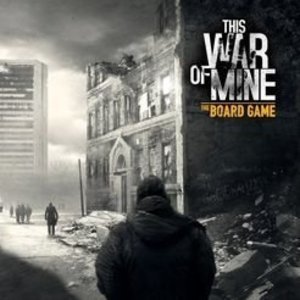
This War of Mine: The Board Game
Tabletop Game
This War Of Mine: The Board Game is the tabletop adaptation of the award-winning video game that...
BankofMarquis (1832 KP) rated Casablanca (1942) in Movies
May 6, 2019
A Classic in Every Sense of the Word
"Of all the gin joints, in all the towns, in all the world, she walks into mine."
"We'll always have Paris."
"Here's looking at you, kid."
"Louis, I think this is the beginning of a beautiful friendship."
And many, many, many other iconic lines were featured in the brilliant 1942 all-time Classic CASABLANCA. Listed as "Warner Brothers Project #410", this film was supposed to be "just another film", but it turned out to be something more.
Starring Humphrey Bogart, Ingrid Bergman and Claude Rains, CASABLANCA tells the story of refugees trying to flee Nazi controlled France (via Casablanca) in WWII. Amongst the denizens of Casablanca, there is Rick Blain, proprieter of Rick's Cafe American - a place where one can buy documents needed to escape, as well as escape - through a bottle.
Humphrey Bogart is perfectly cast as the jaded, "I stick my neck out for no one", Rick. He is cynical, corrupt, selfish...but he also has a heart of gold underneath it all. Bogie plays all of these layers - richly - at once, and was rewarded with an Academy Award nomination. He would lose to Paul Lukas for WATCH ON THE RHINE - a film I haven't seen, so can't judge as to the merits of his win. But...based on Bogart's performance...I'd say he was robbed.
Rick's "partner in crime' is Capt. Louis Renault of the Casablanca police. He is cheerfully and unapologetic-ally played by Claude Rains, who also was nominated (but didn't win) for his performance. These two play off each other brilliantly and the chemistry between these two is evident and I would have LOVED to see another film featuring these two fine performers. I'd say the chemistry between these two actors is a high point in this film, if it weren't for...
Ingrid Bergman as Ilse Lund - a past romance of Rick's. When Ilse and her husband, Viktor Laszlo enters Rick's seeking transit papers to flee the Nazi's, the instant spark and chemistry between Bogart and Bergman is palatable. You can feel the heat between the two of them through the screen and the longing and regret for "what could have been" is heartbreaking. If you were to show an example of "screen chemistry" the scenes between Bogart in Bergman in this film would be "Exhibit A".
Credit for all of this - and for keeping the plot machinations moving forward - is Warner Brothers "contract director" Michael Curtiz - one of the greatest Directors of "old Hollywood." His credits include the Errol Flynn ROBIN HOOD, James Cagney's Oscar turn as George M. Cohan in YANKEE DOODLE DANDY, CASABLANCA, the Bing Crosby/Danny Kaye WHITE CHRISTMAS and John Wayne in THE COMMANCHERO'S - all big budget, big expectations films that delivered the goods. Curtiz won the Oscar for his work in this film.
Assisting him are the two men who wrote so many memorable lines...twin brothers Julius and Phillip Epstein. They (deservedly) won an Oscar for their screenplay - the only set of Twins to win the Oscar.
The supporting cast - including Paul Henreid, Sydney Greenstreet and Peter Lorre - are exceptional as well, as are great scene after great scene - including the "Marseilles" scene and, of course, the fog covered airport scene at the end.
If you haven't seen this film in awhile, do yourself a favor and check it out. If you have NEVER seen it, I envy you the experience of seeing this wonderful black and white film for the first time. It is consistently listed as one of the top 5 films of all time - and earns that ranking. It truly is one of the greatest films - with some of the greatest performances - of all time.
Certainly, if you wanted just one example of Studio "Old Hollywood" movie making, this would be the one movie to watch.
Letter Grade: A+
10 stars (out of 10) and you can take that to the Bank(ofMarquis)
"We'll always have Paris."
"Here's looking at you, kid."
"Louis, I think this is the beginning of a beautiful friendship."
And many, many, many other iconic lines were featured in the brilliant 1942 all-time Classic CASABLANCA. Listed as "Warner Brothers Project #410", this film was supposed to be "just another film", but it turned out to be something more.
Starring Humphrey Bogart, Ingrid Bergman and Claude Rains, CASABLANCA tells the story of refugees trying to flee Nazi controlled France (via Casablanca) in WWII. Amongst the denizens of Casablanca, there is Rick Blain, proprieter of Rick's Cafe American - a place where one can buy documents needed to escape, as well as escape - through a bottle.
Humphrey Bogart is perfectly cast as the jaded, "I stick my neck out for no one", Rick. He is cynical, corrupt, selfish...but he also has a heart of gold underneath it all. Bogie plays all of these layers - richly - at once, and was rewarded with an Academy Award nomination. He would lose to Paul Lukas for WATCH ON THE RHINE - a film I haven't seen, so can't judge as to the merits of his win. But...based on Bogart's performance...I'd say he was robbed.
Rick's "partner in crime' is Capt. Louis Renault of the Casablanca police. He is cheerfully and unapologetic-ally played by Claude Rains, who also was nominated (but didn't win) for his performance. These two play off each other brilliantly and the chemistry between these two is evident and I would have LOVED to see another film featuring these two fine performers. I'd say the chemistry between these two actors is a high point in this film, if it weren't for...
Ingrid Bergman as Ilse Lund - a past romance of Rick's. When Ilse and her husband, Viktor Laszlo enters Rick's seeking transit papers to flee the Nazi's, the instant spark and chemistry between Bogart and Bergman is palatable. You can feel the heat between the two of them through the screen and the longing and regret for "what could have been" is heartbreaking. If you were to show an example of "screen chemistry" the scenes between Bogart in Bergman in this film would be "Exhibit A".
Credit for all of this - and for keeping the plot machinations moving forward - is Warner Brothers "contract director" Michael Curtiz - one of the greatest Directors of "old Hollywood." His credits include the Errol Flynn ROBIN HOOD, James Cagney's Oscar turn as George M. Cohan in YANKEE DOODLE DANDY, CASABLANCA, the Bing Crosby/Danny Kaye WHITE CHRISTMAS and John Wayne in THE COMMANCHERO'S - all big budget, big expectations films that delivered the goods. Curtiz won the Oscar for his work in this film.
Assisting him are the two men who wrote so many memorable lines...twin brothers Julius and Phillip Epstein. They (deservedly) won an Oscar for their screenplay - the only set of Twins to win the Oscar.
The supporting cast - including Paul Henreid, Sydney Greenstreet and Peter Lorre - are exceptional as well, as are great scene after great scene - including the "Marseilles" scene and, of course, the fog covered airport scene at the end.
If you haven't seen this film in awhile, do yourself a favor and check it out. If you have NEVER seen it, I envy you the experience of seeing this wonderful black and white film for the first time. It is consistently listed as one of the top 5 films of all time - and earns that ranking. It truly is one of the greatest films - with some of the greatest performances - of all time.
Certainly, if you wanted just one example of Studio "Old Hollywood" movie making, this would be the one movie to watch.
Letter Grade: A+
10 stars (out of 10) and you can take that to the Bank(ofMarquis)
Night Reader Reviews (683 KP) rated Final Notice: A Political Thriller in Books
Jan 9, 2020
Honest Review for Free Copy of Book
Final Notice by Van Flesher was a very conflicting book for me. I was excited to read this book after I read over the description but found myself to be extremely disappointed. The concept was good but the way the book was written completely lost my interest. I debated a few different times about putting the book down but felt that I owed it to the author to give the book a chance. That being said, just because I did not like it does not mean that other readers would not find it enjoyable.
A company creates a watch called the VT2 and it can monitor a person's health with surprising accuracy. It also has the capability of giving a person a Final Notice when it detect a change that will ultimately lead to death. At the same time the NRA started offering a discount to senior citizens to buy guns in order to defend themselves in their families. On top of these two events, many states are being pushed to have loser laws that will make it easier for people to get guns. These three factors together line up to create a series of horrible events.
The Final Notice feature was intended to give people a chance to get their affairs in order. However, for some once they get their notice they realize with having nothing to lose they can get revenge on people who have wronged them in the past. Some seniors lash out at others, specifically younger people who insulted them in some way. Other people go after political figures that they do not agree with. People who work for the company that created VT2 even joke about how if they knew they were going to die they had a list of people that they would try to take with them. The company ends up working with the FBI and a journalist to offset the negative impact of the VT2 and market it to the public in a positive light.
Many books did not include specifics about religion but that's one does. I found that to be a nice change as it made some of the characters feel more authentic. It also tackled some hard issues, not just the gun laws but also refugees and immigration focusing on those from Syria. With how anti-gun and anti-NRA this book is I was surprised at how casually other issues are mentioned. I would think topic such as underage drinking, fake IDs, and teen pregnancy would also be shown in a more negative light and not just as a passing memory. There were also a few attempt at humor towards the end of the book that just felt weird, in fact I am not even completely sure if it was supposed to be humor. The author says " the author feel sorry..." and " the author was tempted..." and as these are the only time this writing style is used it feels out of place. Morals are also called into question a three different times over the course of this book. It makes the reader question just because you can make money off of something and it is legal does that automatically make it alright?
The target readers for this book would be adult to our supporters of gun control. High school teachers might find this book interesting to teach with topics for group discussion by the students. Also people who are against the NRA in general would probably find this books topics to be enjoyable. After much the bay I have decided to give this book a 2 out of 4. Originally, I was only going to give the book a 1 but the concept of the watch is too interesting. Many chapters or paragraph felt repetitive of previous statements and I think that was largely what turned me away from this book.
A company creates a watch called the VT2 and it can monitor a person's health with surprising accuracy. It also has the capability of giving a person a Final Notice when it detect a change that will ultimately lead to death. At the same time the NRA started offering a discount to senior citizens to buy guns in order to defend themselves in their families. On top of these two events, many states are being pushed to have loser laws that will make it easier for people to get guns. These three factors together line up to create a series of horrible events.
The Final Notice feature was intended to give people a chance to get their affairs in order. However, for some once they get their notice they realize with having nothing to lose they can get revenge on people who have wronged them in the past. Some seniors lash out at others, specifically younger people who insulted them in some way. Other people go after political figures that they do not agree with. People who work for the company that created VT2 even joke about how if they knew they were going to die they had a list of people that they would try to take with them. The company ends up working with the FBI and a journalist to offset the negative impact of the VT2 and market it to the public in a positive light.
Many books did not include specifics about religion but that's one does. I found that to be a nice change as it made some of the characters feel more authentic. It also tackled some hard issues, not just the gun laws but also refugees and immigration focusing on those from Syria. With how anti-gun and anti-NRA this book is I was surprised at how casually other issues are mentioned. I would think topic such as underage drinking, fake IDs, and teen pregnancy would also be shown in a more negative light and not just as a passing memory. There were also a few attempt at humor towards the end of the book that just felt weird, in fact I am not even completely sure if it was supposed to be humor. The author says " the author feel sorry..." and " the author was tempted..." and as these are the only time this writing style is used it feels out of place. Morals are also called into question a three different times over the course of this book. It makes the reader question just because you can make money off of something and it is legal does that automatically make it alright?
The target readers for this book would be adult to our supporters of gun control. High school teachers might find this book interesting to teach with topics for group discussion by the students. Also people who are against the NRA in general would probably find this books topics to be enjoyable. After much the bay I have decided to give this book a 2 out of 4. Originally, I was only going to give the book a 1 but the concept of the watch is too interesting. Many chapters or paragraph felt repetitive of previous statements and I think that was largely what turned me away from this book.
